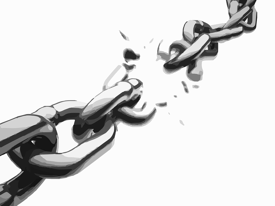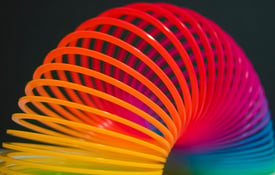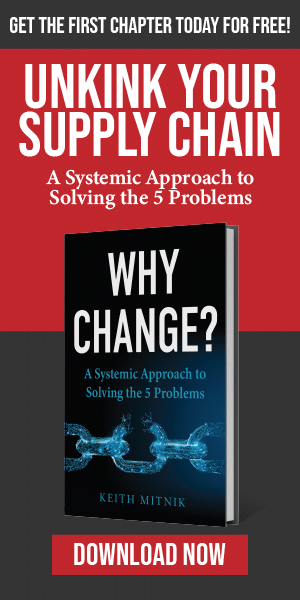
No one wants to consider the possibility that their supply chain will be interrupted. But with the increasing globalization of supply chains everywhere—combined with the risk of natural disasters, unforeseeable disruptions, man-made disasters, challenging international economies, and even terrorist attacks—the only thing more devastating than a supply chain disruption is failure to prepare for one.
But the question is how can you guarantee that the links in your LCD display supply chain have contingency plans in place to ensure that the display parts you need are available when you need them, even in the case of disruptions?
Let’s explore a few methods to ensure that your supply chain contingencies will actually work if the worst happens.
Ask the Tough Questions 
Many LCD suppliers find themselves unprepared to offer contingencies in the case of disruptions because they’ve never asked themselves the difficult questions regarding their preparedness.
Have they identified and prepared for, at least, the most common risk events that could occur? What about documenting lessons learned from unforeseen events that happened in the past? Consider a risk event and ask your supplier what they would do if it happened; do they have an answer?
It’s nice to hope for the best, but you want every step in your supply chain to know the answer to possible issues before they have to face those issues firsthand.
Reduce Risk Through Built-In Flexibility 
In the race to become more efficient and streamline production lines, many suppliers and manufacturers become all too rigid in their processes. These kinds of single-path supply chains might be effective during the best of times, but when disaster strikes and their rigid approach is disrupted, they find themselves unable to quickly adapt, leading to disaster for your LCD display parts.
Work to ensure that every link in your supply chain has alternate plans for production in the case of unforeseen disruptions, for both standard and custom display parts.
Have a Detailed and Specific Plan
Yes, having a plan seems like it should be a given when it comes to disruption preparedness. But it would alarm you to discover just how many suppliers have nothing more than a conceptual idea or, at best, a generic plan of what to do when unplanned events occur.
But one plan does not fit all. 
A factory might be knocked out of commission by a natural disaster or a sudden rise in operating costs. Maybe there’s an employee strike. Perhaps sudden regulations make production impossible or a massive power outage sweeps through the area.
Preparedness for unique contingencies requires both diligence and detail. A factory in downtown Hong Kong doesn’t face the same potential risks as a building in rural Kansas.
Each link in your supply chain should dedicate themselves and their resources to identifying the risks that are unique to them and proactively find ways to mitigate potential disruption.
Consider Safety Stock 
There’s nothing like having peace of mind in knowing you have the displays you need on hand to buy you the time to solve any problem. You can choose to keep spare LCD display parts onsite as the ultimate contingency, which gives you the most control and quickest response time to unforeseen events. There may be additional costs associated with inventory tracking and storage, but it could be worth it to ensure you’re prepared for when you need it.
You could also work with your supplier to have them to keep certain standard display parts readily available for your client account. This could be a complete LCD display or just additional stock of an at-risk component.
Backup Factories
What can your LCD supplier do if any one of their suppliers goes out of business? Do they have multiple sources for each component that could then be easily moved to a different facility? What are the most at-risk subcomponents, and what would be the longest potential downtime if that component needed to be moved? 
What are the possible solutions if your LCD supplier’s factory was no longer able to function? Do they have additional facilities or access to temporary facilities? What would be the downtime to change, and what tooling would need to be recreated to move the main LCD production to a new facility?
Above All: Test, Test, Test
At the start of this post, we mentioned the importance of creating contingency plans that actually work. But how can you be sure that a plan will work if it’s never been put into action? Well, it’s very simple: You actually test the plan.
And this doesn’t mean you have to put into action a full-scale test and mobilize resources. After all, that’s not a practical use of time and money; however, you can test conceptually. For example, you can develop and walk through different contingency scenarios with your work teams in quarterly meetings. Discuss the best way to handle them, then document the results so you have a written plan of action.
Insist that every link in your supply chain not only creates contingency plans, but tests their relevancy and effectiveness on a regular basis, even if in conceptual form. This is the only way to ensure that future disruptions don’t turn into disasters for you.
Conclusion
There are a lot of steps involved in receiving your custom display parts, which means there are a lot of things that could wrong along the way. As the customer, you need to do your due diligence in making sure each link in your supply chain has contingencies in place to mitigate risk events and ensure your custom parts make it to you on time.
Interested in learning more? You can click here to watch informative videos about custom displays (and other display-related subjects).
And to find out how easy we could integrate with your organization as your new display supplier, please contact us.






